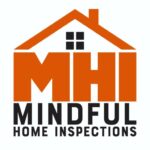Everything You Need To Know About Radon Testing
Choosing to hire a certified radon inspection service provider to perform the radon test in your house and or workplace is recommended.
MINDFUL HOME INSPECTIONS of Shelby, Gastonia & Kings Mountain, NC & Gaston County regions and has a team of certified inspectors ready to test commercial and residential premises.
Radon Testing
Radon is a radioactive gas that emanates from soil and tends to concentrate in enclosed spaces such as houses, basements, crawlspaces, etc.
As radon certified inspectors the process is three fold:
1. To deploy and retrieve the radon detectors and provide a report of associated measurement results which are delivered to a laboratory for analysis
2. Deliver the radon testing detection devices to a certified Radon Analytical Laboratory for analysis.
3. As certified radon mitigation professionals we will interpret the radon test results and study findings. Our Radon strata inspection services are more than just radon testing, as we, who are skilled to mitigate radon health concerns can best determine the most effective way to manage radon concentrations within buildings which may include the requiring further diagnostic testing, the design and/or installation of radon mitigation systems, etc. As professional home builders we can help with this.
Protecting Family & Employees and The Self From Exposure To Radon
Why testing for radon concentrations is important is that as an odorless radioactive gas has no smell, no color, and no taste, the only way to know your radon level is to test. Radon is reported to be the second-leading cause of lung cancer after smoking.
Professional Testing Versus Do-It-Yourself Solutions.
Testing is the first step in protecting from radon though simple takes a minimum of three months to conduct a long-term test. Should the test come back high, there is no reason to fear a high radon test result as we are skilled to recommend radon mitigation methods that can successfully reduce the home or commercial space to a safe level. As certified radon mitigation professionals we have received the training necessary to properly assess a building to decide which radon mitigation method is most appropriate and when needed can recommend / design a system to efficiently and effectively reduce your radon to a safe level. Often, the work involved can be done in one day, at a cost that's comparable to a new furnace or a couple of new appliances.
Tips to Mitigate Radon
Even when the radon level results are below the action level when no action is required since radon levels vary over time, it is recommended to test the building again in 3 years.
When safe to do so, temporarily open windows on the lowest level of the building to help reduce the amount of radon that is being drawn into the strata. Weather permitting opening all windows will improve air quality by diluting the air with fresh air and reducing accumulation. Running well-maintained mechanical ventilation such as an air exchanger can also help dilute with fresh air
MITIGATING RADON!!!
MINDFUL HOME INSPECTIONS Inc. is knowledgeable about radon testing and proper installation of new building code requirements with respect to radon. While radon measurement devices can be purchased individually or in bulk from a manufacturer and then returned to that manufacturer for analysis at the end of the testing period may be cheaper, we recommend the radon mitigation services of certified professionals such as ourselves. Savings occur that the radon measurement devices that can be analyzed faster and while it has required a more significant investment of money and time to set up, but provides the flexibility of doing the analysis in a timeliest fashion as well as the savings to reuse the device system.
The Health Risks of Radon Exposure.
Every day, you are exposed to radon in small amounts outdoors, but it is at much higher levels indoors - the airtight environments of most homes and buildings can trap radon gas and allow for concentrations to build up and become dangerous. Prolonged inhalation of high levels of radon has been linked to an increased risk of lung cancer in both smokers and non-smokers. The World Health Organization (WHO) estimates that 3-14% of all lung cancer cases are directly related to elevated levels of indoor radon exposure.
Professional Testing Versus Do-It-Yourself Solutions.
There are two common approaches to testing for radon levels in your home: professional testing and do-it-yourself (DIY) solutions such as test kits. Professional testing involves experienced technicians coming to your home and setting up specialized monitoring equipment which measures the exact levels of radon over a period of days. DIY solutions usually involve setting up a relatively inexpensive, easy-to-use device and leaving it in place for at least 90 days. Both methods provide accurate results, but the precision of professional tests makes them preferred by most government agencies responsible for health and safety regulations.
Methods Used to Test for Radon Levels in the Home.
Professional testing and DIY radon tests are the two most common methods used to test for radon levels. Professional testing requires a specialist or technician to assess your home and set up monitoring equipment in key locations. DIY test kits are less precise but offer an easy-to-use solution for people seeking a quicker result. If you suspect radon is present in your home, it's best to start with a DIY test kit and then arrange professional testing if necessary.
How To Reduce High Radon Levels In Your Home.
If your radon test results come back higher than the EPA suggested limit, don't panic! There are a few steps you can take to help reduce the levels of radon present in your home. Firstly, it's important to make sure that any cracks in your walls and foundation are sealed. Additionally, ensure that all outdoor drainage systems are working properly and away from any entry points of the house. Lastly, you could consider investing in a mechanical ventilation system to push air out of susceptible areas such as basements or crawlspaces.
